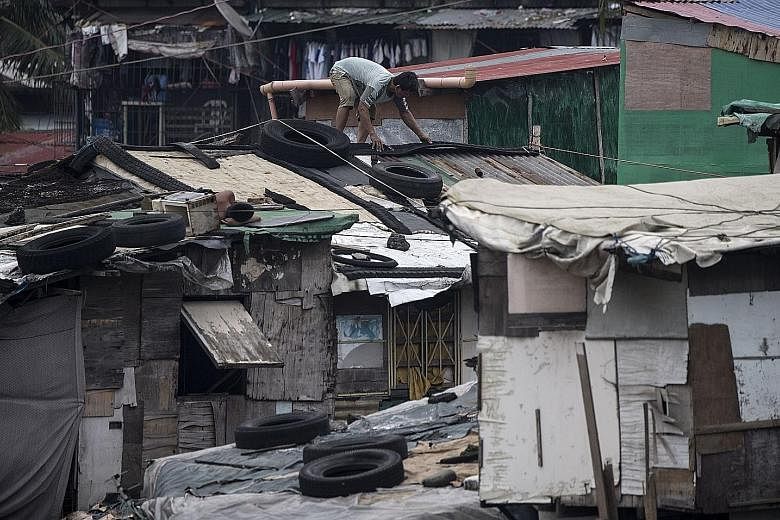Thousands of people fled to emergency shelters in the northern Philippines yesterday as one of the most powerful storms to threaten the country in years was set to smash into the main island of Luzon.
Super Typhoon Mangkhut, with maximum sustained winds of 268kmh, was expected to make landfall on northern Luzon early today (Singapore time) with an intensity not seen since Typhoon Haiyan swept across the central Philippines in 2013, killing more than 6,000 people, The New York Times reported.
Luzon is the Philippines' largest and most populous island, but the northern tip is largely agricultural. More than four million people live in the area that is likely to be the most affected.
The storm is forecast to then head to southern China, threatening millions more people in southern Guangdong province and Hainan. China's meteorological authority raised a yellow storm alert - the second of four levels - yesterday. Hong Kong and Macau are also on alert, while southern Taiwan is also expected to be affected.
Thousands of Filipinos fled their homes and stockpiled emergency supplies, fearing a major disaster. Others tried to fortify their homes by placing wood over the windows and tying down roofs with rope.
Philippine officials warned of severe flooding and extremely high winds, with as much as 15cm to 25cm of rain in certain areas.
The government deployed emergency teams, communications systems and supplies, including food and water, to northern Luzon.
Mangkhut has shown no signs of weakening as it neared Luzon. The storm had gusts of up to 325kmh, the United States Navy's Joint Typhoon Warning Centre said yesterday, maintaining its power after it struck Micronesia earlier in the week.
Mangkhut was expected to weaken to a Category 3 storm after crossing Luzon but strengthen again once it is over the South China Sea, storm-tracking site Tropicalstormrisk.com's forecast map showed.
The Hong Kong Observatory said the weather will deteriorate sig-nificantly in Hong Kong tomor-row, when Mangkhut is expected to be the closest to the territory and typhoon signal No. 8 is likely to be hoisted, the Xinhua news agency reported.
High-speed rail services have been cancelled between Guangdong and neighbouring Hunan province, as well as between Guangzhou, Shenzhen and Hong Kong, state media reported.
Climate scientists said warmer seas and a warmer atmosphere were adding fuel to storms, increasing the power of their winds and the amount of rainfall.
While there might not be a larger number of hurricanes, typhoons and cyclones in future, the strongest ones will be even more intense, Bloomberg quoted Dr Colin Zarzycki, a project scientist at the US National Centre for Atmospheric Research in Colorado, as saying.
"We are loading the dice to more of these high-impactful weather events, going forward," he said. In the future, "the type of events we might see once in 50 years, we might see once in 10 years".
SEE OPINION

